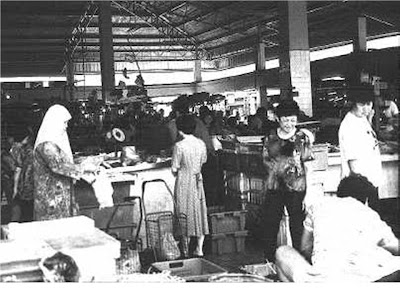"Flats were first introduced in the waning days of British colonialism and were greatly expanded following Singapore's independence on this day in 1965, 42 years ago. A new master-plan was developed for Singapore under the guidance of the UN Development Agency emphasising modern industrialized, mass housing, in the International Style."
"At least one generation of Singaporeans has grown up in high rises and they now have children. During that time an effective and pervasive common value system has developed among Singaporeans living in high-rise housing. This system includes respect for the physical environment, and a high level of tolerance of ethnic differences. Living below, above and side by side other people requires tolerance of neighbours and a respect towards the environment of the housing estate for the good of all."
"One place that illustrates how people have adapted to the high-rise environment is the void deck. This area has become the settings for various distinct activities involving the residents including major ceremonies and daily socializing. Malay weddings and Chinese funerals are communal activities that require a fair amount of space. In these situations the void decks are elaborately decorated to accommodate the pageantry of these activities and after the ceremonies are completed, residents will clean up and return the void deck to its normal state. These activities also illustrate the high amount of tolerance expressed by residents of other ethnicities living above the void decks because these activities generate a lot of noise and, sometimes, funeral smoke and ash."
"Another activity unique to the void decks is as a social area for elderly, particularly women, residents becoming an ‘old women's corner'. Social activity by the elderly also enforces behaviour of other residents. Teenagers who may cause mischief in the void decks are often unwilling to loiter there because the elderly may criticize the younger residents for their behaviour."
"Along the access corridors also, most residents personalize this space in various ways by setting out plants, shoe racks, and items of religious importance. With limited space in the corridors conflicts occasionally arise between the residents. These are usually settled by the residents themselves with one party often deferring to the other, and though they may grumble privately, they will tolerate the neighbour's use of their space."
"Another example involving residents self-policing is the drying of clothes which are often hung on a pole cantilevered out from the flats. Many residents have complained that wet clothes from upstairs will drip down on their own while drying. To solve this problem residents have developed schedules for drying clothes so they will not drip on each other's laundry."
"The physical layout of Singapore's new towns reinforces planned to provide needed services in convenient locations for the residents. One is the ‘wet market' for fresh produce. The only time many of them are open, is in the morning when housewives do their daily shopping. Friendships and associations are gradually developed from the familiarity among housewives going to the market at the same time every day."
"Another area which plays an important role in the daily lives of the residents are the eating areas known as ‘hawker centres'. A typical hawker centre has several small food and drink stalls and open seating for customers. The hawker centre is one of the best examples of multi-cultural in Singapore. At almost every hawker centre there will be a blend of stands selling Chinese, Malay, and even Western food; it is also not unusual to find vendors of one race selling the food of another, such as Indians selling Malay food."
In creating an architecture that both reflects and reinforces the culture that uses it and is accepted by that society, a new ‘vernacular' has been formed.
Source: Sishir Chang, ‘A High-Rise Vernacular in Singapore’s Housing Development Board Housing’ Berkeley Planning Journal 14 (2000): 97-116
Download
Coming:
|
2 comments:
may i know when was the photos taken?
I got the photos from Sisir Chang's paper which you can download from:
http://www.google.com/url?sa=t&ct=res&cd=1&url=http%3A%2F%2Fwww-dcrp.ced.berkeley.edu%2Fbpj%2Fpdf%2Fbidl1407.pdf&ei=Ugi7RpKcBJyYswKThIjcDw&usg=AFQjCNFFKu6fisFxQNPuRd7oreAnZgYXNA&sig2=4tahZttNK-71dejIzq8uWg
my guess is that a lot of the photos are from the 70's, possibly the 60's.
Post a Comment